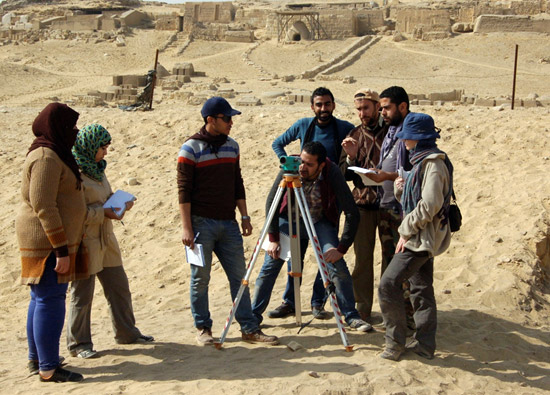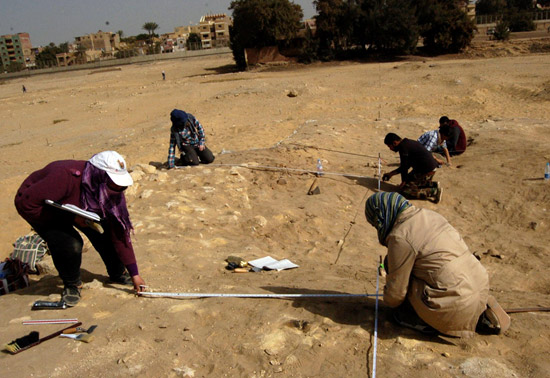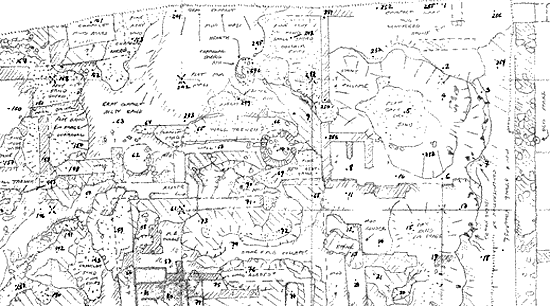by Freya Sadarangani (AERA Post-Excavation Manager)
It’s great to be back excavating at HeG, and great to be back teaching at the AERA fieldschool. Teaching in this fieldschool is a pretty special experience for me – the students are always so incredibly keen and interested, serious about learning but always there’s a good mix of site banter and laughter. And this season is no exception, I am teaching fieldschool Unit 1 (FS1), with my colleague Rabee Eissa Mohammed. We have five great students (Aly Ahmed Aly, Hanaa Hagag Sayed, Kholoud Abd el- Naby, Mohammed Abd el-Maqsoud, Rahel Glanzmann) and two trainees (Ibrahim Samir Ibrahim and Mohamed Arafa), and are joined by archaeologist Virag Pabeschitz.

Rabee Eissa Mohamed teaching the FS1 students and trainees how to use the Auto Level.
Photo by V.Pabeschitz.
We’re only a week into the fieldschool, but already the students have learnt and experienced the importance of cleaning the site thoroughly, identifying different deposits by their composition, colour, and types of inclusions; co-ordinate systems and our own 5m grid; planning archaeological features at scale 1:20; setting up and using the Auto Level – and loads more.

FS1 students planning in Area AA-S, view to the East. Photo by F. Sadarangani
FS1 is excavating the high ground in the Western Town, to the south of the AA Pedestal Building, and west of House Unit 1 and the Pottery Mound. This area, AA-S, has not previously been excavated. Compared with the settlement level of the rest of HeG, AA-S is some 2m higher and as such we’re expecting a good level of preservation of settlement remains. The area was planned in 2005 during a large push to identify the full extent of the HeG settlement so that the full area could be protected. So we knew what to expect – a series of walls bounding rooms, pits and at least two large circular ‘ovens’ (or at least circular mudbrick bordered installations with burning on the inside). So sure enough we removed the 2005 backfill, cleaned back, to reveal an area with good clear plaster lines (always good wall indicators…..), adhering to walls bounding small chambers, and larger spaces, and possibly corridors. And, sure enough, we can make out the two circular ‘ovens’ – with clear red scorching on the inside, and black ash piled up on the outside. We can make out various deposit of limestone and mudbrick collapse, dumps of broken bread molds, and a number of large pits. In the highest ground we’re not entirely sure yet, but there may be later walls and surfaces that might be quite late in the settlement sequence of HeG. When we start excavating next week – all will be become clear. Will keep you posted….

2005 plan of AA-S. Drawn by Mark Lehner
